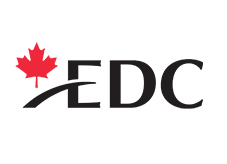Product development lifecycle: New drug development
This article describes the product development lifecycle of a new therapeutic, such as a new drug or biologic. For details on the product development lifecycle of a new medical device, please see Product development lifecycle: Medical device design and development.
The development of a new therapeutic product (i.e., a new drug or biologic) is a long, complex and expensive process which typically takes 10 to 12 years (and sometimes more) from product identification to commercialization.1 This lifecycle usually involves the following stages:
- Discovery and research: Identification of a target therapy for the diagnosis, cure, mitigation, treatment or prevention of a disease or condition.
- Development: This includes the necessary non-clinical research, clinical studies and chemistry, manufacturing and controls (CMC) development to support clinical trials (e.g., IND, IDE, CTA, IDE) and licensing applications (e.g., NDA, NDS, MAA).*
- Regulatory review and approval: Submission of data for regulatory review to demonstrate product safety, efficacy and quality for its proposed indication.
- Commercialization and marketing: Ongoing regulatory compliance through safety reports and other required submissions (e.g., product renewal).
This article focuses on the development stage (#2) outlined above.
New therapeutic product development
Development of a new therapeutic product normally begins with non-clinical testing followed by different phases of human clinical trials in support of the licensing application. Chemistry, Manufacturing and Controls (CMC) activities are conducted concurrently to support these studies.1
Preclinical/non-clinical studies2,3
Non-clinical testing (laboratory experimentation and animal investigation) assesses the potential therapeutic effects of a drug substance and demonstrates the reasonable safety of a substance before it can move to human studies. It may also include long-term studies (e.g., reproductive and carcinogenicity studies) that are conducted after the clinical trial is initiated. Non-clinical studies must be conducted following Good Laboratory Practices (GLP). This phase of testing may include in vitro and in vivo studies to research metabolism (pharmacodynamics [PD] and pharmacokinetics [PK]), safety, toxicity, dosage and efficacy. When designing these studies, ensure you review all related regulatory materials, such as guidance documents from your regulatory agency and safety topics from the International Conference on Harmonization [ICH].
Clinical trials2
The objective of clinical trials is to evaluate the safety and efficacy of a product in humans. A clinical program involves four phases and must comply with regional requirements as well as Good Clinical Practices (GCP). Phases I to III are conducted to collect safety and efficacy information in support of the licensing application. Phase IV is conducted post-marketing (i.e., once the product reaches the market).
Phase I – Human pharmacology
Phase I starts with the initial administration of an investigational product into humans (healthy volunteers, or in patients if for the use of cytotoxic drugs). These studies usually have non-therapeutic objectives. The study design can be open and baseline-controlled, or may use randomization and blinding to improve the validity of observations in the study. Phase I clinical trials may include:
- An estimation of the initial safety and tolerability, including both single- and multiple-dose administration
- A PK study
- PD studies, and studies relating drug blood levels to response (PK/PD studies)
- Early measures of product activity
Phase II – Therapeutic exploratory
Phase II explores the therapeutic efficacy in patients, with the designs including concurrent controls and comparisons with the baseline status. The patient population is normally selected with narrow criteria. A major objective is to determine the dose(s) and regimen to support
Phase III trials. Other objectives may include potential study end point evaluations, therapeutic regimens and target populations (e.g., mild versus severe disease) via exploratory analyses, examining data subsets and using multiple end points in clinical trials.
References
- Babiarz, J.C. (2008). Chapter 1. Overview of FDA and drug development. In D.J. Pisano & D.S. Mantus (Eds.) FDA Regulatory affairs. A guide for prescription drugs, medical devices, and biologics (2nd ed). New York: Informa Healthcare.
- International Conference on Harmonisation. (2012). Quality guidelines. Retrieved June 1, 2012, from http://www.ich.org/products/guidelines/quality/article/quality-guidelines.html.
- International Conference on Harmonisation. (1997, July). General considerations for clinical trials E8. Retreived June 1, 2012, from http://www.ich.org/fileadmin/Public_Web_Site/ICH_Products/Guidelines/Efficacy/E8/Step4/E8_Guideline.pdf.
- United States Code. Title 21, Part 312, Investigational drug application. Retrieved June 1, 2012, from http://www.accessdata.fda.gov/scripts/cdrh/cfdocs/cfcfr/CFRSearch.cfm?CFRPart=312.
- International Conference on Harmonisation. (2002, September). The common technical document for the registration of pharmaceuticals for human use: Quality – M4Q(R1). Quality overall summary of Module 2. Module 3: Quality. Retrieved June 1, 2012, from http://www.ich.org/fileadmin/Public_Web_Site/ICH_Products/CTD/M4_R1_Quality/M4Q__R1_.pdf

